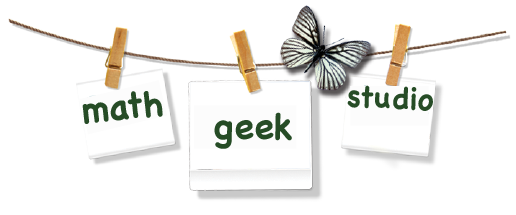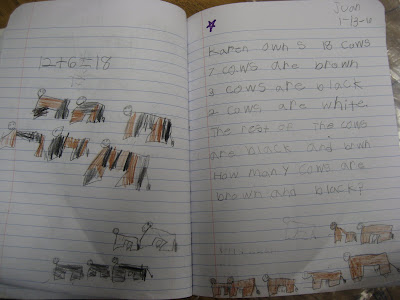Saturday, January 30, 2010
Math Terminology for English Language Learners
Using the formal terminology in teaching the different math concepts is always the right way to go! Trying to change the terminology to informal math language for fear that the English Language Learner (Bilingual/ESL student) will not understand it is a definitely not good for the student.
Tuesday, January 19, 2010
Sunday, January 17, 2010
Top 10 statements about English Language Learners
10. 1 out 4 children come to school speaking 63 other languages.
9. Information is a chemical.
8. When you teach, you are actually changing the structure of the student's brain.
7. 5-10 years of age is the optimal time for second language learning to occur. It is not detrimental to a child if they start to learn a new language early.
6. Elementary and Middle School is the best time to learn a second language.
5. Individuals can make cognitive and linguistic gains exceeding that of their monolingual peers.
4. The two hardest things in life to handle is success and failure.
3. Create educational programs to accelerate not remediate the learner.
2. What is learning? It is a biological process invented for survival.
1. Being bilingual is a great asset to all students!
9. Information is a chemical.
8. When you teach, you are actually changing the structure of the student's brain.
7. 5-10 years of age is the optimal time for second language learning to occur. It is not detrimental to a child if they start to learn a new language early.
6. Elementary and Middle School is the best time to learn a second language.
5. Individuals can make cognitive and linguistic gains exceeding that of their monolingual peers.
4. The two hardest things in life to handle is success and failure.
3. Create educational programs to accelerate not remediate the learner.
2. What is learning? It is a biological process invented for survival.
1. Being bilingual is a great asset to all students!
Friday, January 15, 2010
Developing A Story Problem For Your Students To Solve
When presenting math concepts to elementary students, I always try to make as many real connections as possible. One of the math strategies I apply when developing a story problem for my students is to use the real names of my students in the story problem. Students form a mental picture of an actual student in their classroom being part of a math story problem. This helps students understand this whole meaning of how numbers are used in everyday situations.
The following is a 1st grade math story problem I developed using that strategy. :
Karen is the owner of 18 cows. She has 7 brown cows, 3 black cows, 2 white cows and the rest of the cows are both brown and black. How many cows are both brown and black?
Yall come back now to view student work on this math story problem!!!
The following is a 1st grade math story problem I developed using that strategy. :
Karen is the owner of 18 cows. She has 7 brown cows, 3 black cows, 2 white cows and the rest of the cows are both brown and black. How many cows are both brown and black?
Yall come back now to view student work on this math story problem!!!
Saturday, January 9, 2010
National Bilingual Education Conference Feb. 3 - 6, 2010
The National Association of Bilingual Education Conference 2010 is just around the corner! Attending this conference is highly recommended. It is always such a great event because Educators from all over the US come together to gather the latest information and research. Come see me present a math bilingual workshop called: Geometry and Your Bright Bilingual Students. It will be a two hour math workshop with real-world projects to take back to your classrooms. Then come see me at my booth as I will be exhibiting my work. I look forward to meeting you Feb. 3 - 6, 2010 in Denver, CO!
Sunday, January 3, 2010
Math Work Table
Look at our math work table!! This is what I call, 'organized chaos'! Students get to choose from different arrays of pencils, markers, highlighters, sticky notes, dry erase markers, and erasers to complete their performance assessment. Also, students write on the table using dry erase markers to jot down their thoughts, calculations, etc. After we are finished with our math project, we simply clean the work table with cleaning wipes so it can be ready for our next math project.
Friday, January 1, 2010
What will money transactions look like in 100 years from now?
HAPPY NEW YEAR MATH ENTHUSIASTS!!!
Subscribe to:
Posts (Atom)





